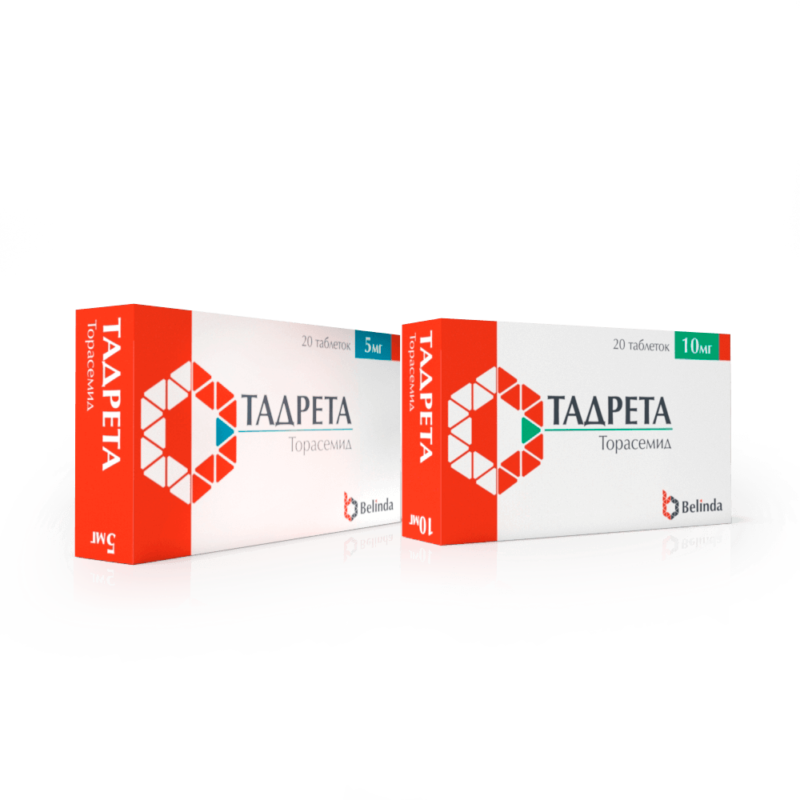
Tadreta
PRESCRIPTION
Blocks myocardial aldosterone receptors, reduces fibrosis and improves myocardial diastolic function.
Manual
Tadreta 5 mg: each tablet contains:
- Anhydrous Torasemide BP 5 mg;
- Excipients q.s.
Tadreta 10 mg: each tablet contains:
- Anhydrous Torasemide BP 10 mg;
- Excipients q.s.
- edema caused by heart failure, liver, kidney and lung diseases;
- primary arterial hypertension (used as monotherapy or in combination with other antihypertensive drugs).
The drug is prescribed to adults, orally, regardless of food intake.
For edema, the drug is prescribed at a dose of 5 mg once a day. If necessary, the dose can be gradually increased to 20 mg 1 time per day. In some cases, it is recommended to use up to 40 mg per day.
For edema associated with congestive heart failure, a dose of 5-20 mg is prescribed once a day.
If necessary, the daily dose can be gradually increased, doubling it, to a maximum of 200 mg.
For edema associated with chronic renal failure, the initial dose is 20 mg per day.
If necessary, this dose can be gradually increased, doubling it, until the optimal diuretic effect is achieved. The maximum daily dose is 200 mg.
For edema associated with liver cirrhosis, the drug is prescribed in a dose of 5-10 mg 1 time per day. If necessary, this dose can be gradually increased, doubling it, until the appropriate diuretic effect is achieved. There have been no adequately controlled studies in patients with liver disease using doses greater than 40 mg per day.
For primary arterial hypertension, the dose is 2.5 mg once a day. If necessary, the dose can be gradually increased to 5 mg per day. According to studies, a dose of more than 5 mg per day does not lead to a further decrease in blood pressure. The maximum effect is achieved after approximately 12 weeks of continuous treatment.
Elderly patients do not require dose adjustment.